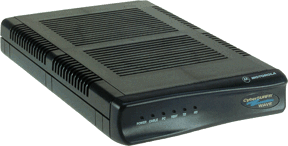https://marco.org/2009/08/26/this-takes-me-back-this-too-as-i-mentioned
This takes me back. (This, too.)
As I mentioned in passing yesterday, I got my first cable modem in 1999. It cost $40/month from Time Warner.
The modem, pictured, was huge and dumped out a ton of heat. Connection speed was limited only by its 10 Mbit Ethernet port. This speed limit was understandable, given that most computers at the time didn’t even have network cards, and few people wanted to spring for the expensive 100 Mbit option. (Many household computers in use at the time didn’t even have PCI slots.)
The modem never needed to be reset. The full bandwidth was always available. Outages were rare.
Now, a decade later, I wish I had that same reliable, consistent 10 Mbit/s service for the inflation-adjusted price of about $52/month from Time Warner (or anyone else, for that matter).
Instead, I pay Time Warner about $55/month for their high-speed tier, which supposedly gives me a 15 Mbit/s downstream. It rarely hits that speed because it’s grossly oversold, sometimes refusing to maintain even 2 Mbit/s of throughput in the evenings. My three-month-old service just failed, and I was offered a 7-hour repair window today so I wouldn’t need to wait until the next available appointment in 10 days.
I’d gladly switch to another provider if one were available. Cablevision serves the region, but they have a policy not to compete with Time Warner in any area. (I’m about 10 blocks away from a Cablevision-served area.) And Verizon has decided that my neighborhood, full of educated, middle- to upper-class young people, is the last priority for FiOS availability in the entire region — we might get it in 2010. They helpfully offer DSL service instead, with a maximum speed of 1.5 Mbit/s down.
I have never lived anywhere where I had more than two usable broadband ISPs — one cable, one DSL — to choose from.
The FCC is currently drafting a new broadband subsidy proposal. Let’s hope they get it right this time.
